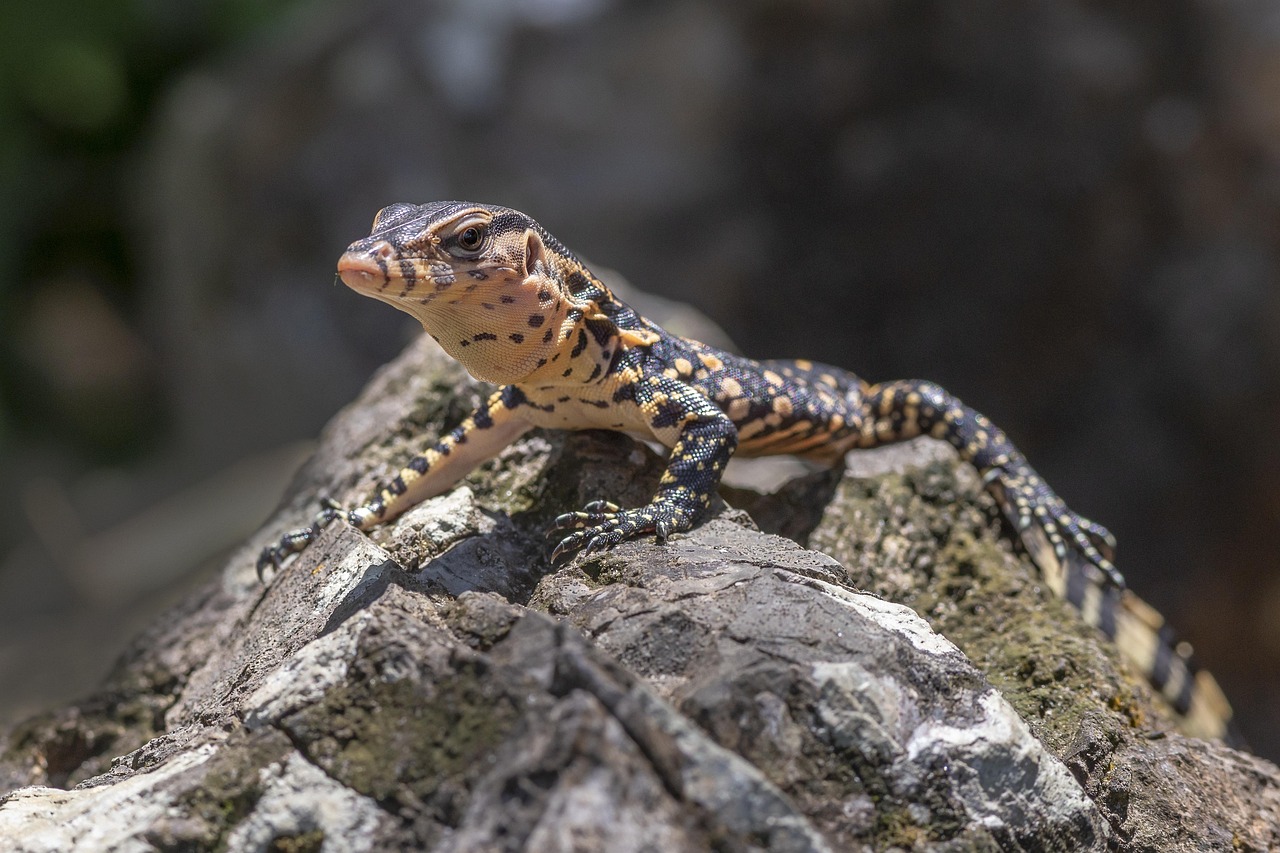The Asian Water Monitor is a large, semi-aquatic lizard native to South and Southeast Asia. It is one of the largest lizards in the world, second only to the Komodo dragon. Known for its powerful build, long tail, and excellent swimming abilities, this species thrives in wetlands, rivers, swamps, and even urban areas.
Physical Description
- Size: 1.5 to 3 meters (5 to 10 feet) in length
- Weight: 19–25 kg (42–55 lbs), though some individuals can weigh over 50 kg (110 lbs)
- Coloration:
- Dark gray, brown, or black body with yellowish speckles or bands
- Lighter underbelly
- Body Features:
- Long, muscular tail (often half their total length) used for swimming and defense
- Forked tongue, similar to snakes, used to detect scents in the air
- Sharp claws for climbing and digging
- Lifespan: Around 15–20 years in the wild, longer in captivity
Habitat & Distribution
- Native to:
- Found across India, Sri Lanka, Bangladesh, Myanmar, Thailand, Malaysia, Indonesia, Cambodia, Vietnam, Laos, and the Philippines.
- Preferred Habitat:
- Lives near freshwater sources like rivers, swamps, lakes, and coastal mangroves.
- Adapts well to urban environments, often seen near drains, canals, and garbage dumps.
Behavior & Diet
- Diet:
- Carnivorous and opportunistic, eating fish, amphibians, birds, eggs, rodents, crabs, snakes, and carrion.
- Occasionally scavenges human food waste in cities.
- Hunting Strategy:
- Uses its keen sense of smell and forked tongue to track prey.
- Strong swimmer, often ambushes prey in water.
- Capable of climbing trees to raid bird nests.
- Daily Activity:
- Diurnal (active during the day).
- Spends much of its time basking in the sun, hunting, or swimming.
- Defensive Behavior:
- When threatened, it may hiss loudly, puff up its body, lash its tail, or bite.
- Fast runner on land and a strong swimmer, often escaping into water.
Reproduction & Lifecycle
- Mating Season: Typically during the wet season (June–October).
- Eggs:
- Females lay 20–40 eggs in burrows, rotting logs, or termite mounds.
- Incubation lasts about 6–9 months.
- Hatchlings:
- Young monitors are about 25–30 cm (10–12 inches) long at birth.
- Highly vulnerable to predators like snakes, birds of prey, and larger monitors.
Threats & Conservation
- Threats:
- Habitat destruction due to urbanization and deforestation.
- Hunting for skin (leather trade), meat, and traditional medicine.
- Persecution in some areas due to misconceptions that they attack livestock.
- Conservation Status:
- Listed as Least Concern (LC) by the IUCN Red List, but some populations are declining due to human activities.
Interesting Facts
- One of the fastest-swimming lizards, using its muscular tail like a crocodile.
- Can hold its breath for up to 30 minutes underwater.
- Sometimes mistaken for Komodo dragons, though they are smaller and more widespread.
- Can survive in urban areas, often scavenging in garbage dumps and drains.
Summary
The Asian Water Monitor (Varanus salvator) is a large, adaptable, and intelligent lizard found across South and Southeast Asia. It thrives in wetlands, rivers, and even cities, feeding on fish, small animals, and carrion. Though persecuted in some areas for its size and hunting habits, it plays an important role in controlling pests and cleaning up carrion. Despite threats from habitat loss and hunting, it remains one of the most widespread and successful monitor lizard species.
Views: 255
Subscribe to the newsletter:
